The Curse of Oak Island- Season 6, Episode 1: Rick’s Big Bang Theory
The following is a plot summary and analysis of the Season 6 premiere of the History Channel’s TV series The Curse of Oak Island.
[SPOILER ALERT!!!]
Plot Summary
Brothers Rick and Marty Lagina head to Oak Island for another season of treasure hunting. During the drive, Rick asks the historically skeptical Marty how confident he is that “something happened on Oak Island.” The younger Lagina replies that he is now “70% convinced that something very out of the ordinary” took place, and admits that his views have changed considerably in light of the many interesting discoveries made on the island the previous year. He later states that these discoveries have motivated him to increase operations on the island tenfold this season.
The brothers arrive on Oak Island and head to the War Room, which is now located at a different part of the island devoid of summer tourists. There, they meet with the “Fellowship of the Dig” and discuss the agenda for the upcoming season. Rick suggests that they spend this season working on the “Big Three”: the Money Pit, the Swamp, and Smith’s Cove. His suggestion is met with general acclaim.
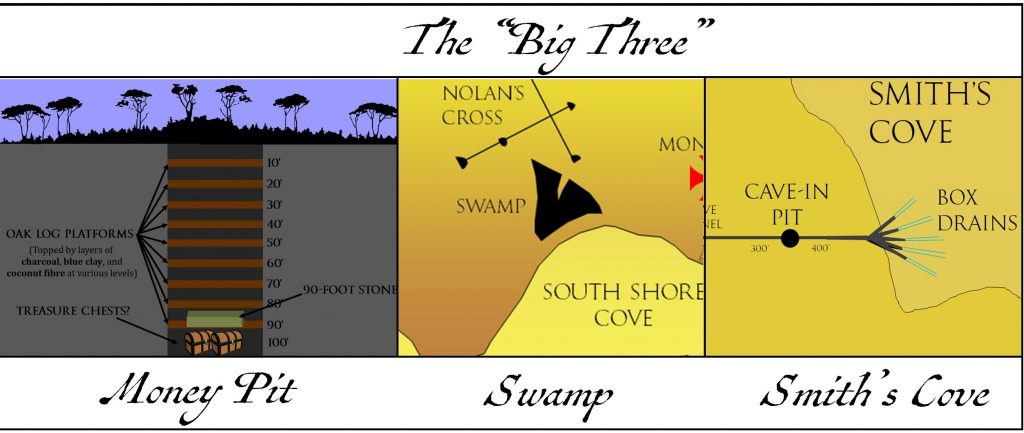
Regarding operations on Smith’s Cove, the treasure hunters agree that they would like to fully expose the mysterious U-shaped structure, a piece of which was unearthed in Season 5, Episode 16. Craig Tester remarks that, in order to accomplish this, they will need to build an enormous cofferdam around Smith’s Cove. This structure, the narrator informs us, will be larger than any other cofferdam ever constructed in the island.
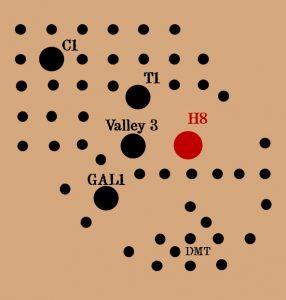 Regarding operations in the Money Pit area, the treasure hunters agree that there is likely more information to be extracted from Borehole H8, which yielded parchment, leather, and human bones the previous year. Rick also suggests that they conduct a seismic survey of the Money Pit area in order to come to a better understanding of its subterranean nature.
Regarding operations in the Money Pit area, the treasure hunters agree that there is likely more information to be extracted from Borehole H8, which yielded parchment, leather, and human bones the previous year. Rick also suggests that they conduct a seismic survey of the Money Pit area in order to come to a better understanding of its subterranean nature.
The narrator then explains that this seismic survey will entail hiring a seismic exploration crew to lay out lines of geophones (devices which detect seismic waves) in the Money Pit area, as well as perpendicular lines of blast charges across them. The seismic crew will then detonate the charges, sending seismic waves into the earth. Some of these waves will reflect off bedrock and travel back to the surface. The geophones will capture data from these shockwaves, which a geophysicist will later interpret in the hope of identifying and locating any underground anomalies in the surveyed area.
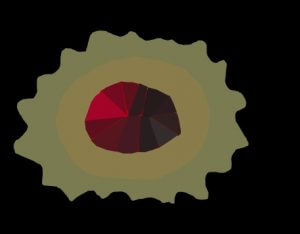
Talk then turns to the rhodolite garnet brooch which Gary Drayton discovered on Oak Island’s Lot 8 in Season 5, Episode 16. Marty states that he would like Drayton to metal detect the entire island. Rick then suggests that they clear Lots 1-8, as well as Lots 21 and 22, of trees and brush so that Drayton can search these areas more thoroughly and efficiently.
The following day, Rick and Marty Lagina, Craig Tester, and Dave Blankenship meet with Alex Gauthier of Eagle Canada (a seismic exploration company) at the Money Pit area. It is revealed that Eagle Canada will conduct a preliminary seismic survey on a small patch of ground where the Halifax Tunnel is believed to be located. If the survey data yields a clear picture of the area which is consistent with the Oak Island team’s knowledge of the Halifax Tunnel, the Fellowship of the Dig will allow Eagle Canada to conduct a larger, more expensive seismic survey of the entire Money Pit area.
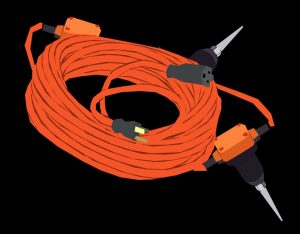
While the men of Eagle Canada lay their geophones, Marty Lagina, Charles Barkhouse, Gary Drayton, and Laird Niven head to Smith’s Cove, where they do some metal detecting. The narrator explains that harsh winter storms had eroded the beach at Smith’s Cove, potentially bringing buried artifacts closer to the surface.
Drayton quickly uncovers an iron nail which Niven estimates to be late 19th Century. Shortly thereafter, he uncovers a small scrap of lead sheet. Drayton and Niven explain that lead was once commonly used to patch up damaged ships, and suggest that this artifact is likely such a patch- perhaps even a patch from a Spanish galleon.
Later, the Oak Island crew congregates at the Mug & Anchor Pub in the nearby town of Mahone Bay, on the mainland. There, Rick Lagina informs the team that the University of New Brunswick has agreed to run a laser ablation test on the lead cross (which Rick has dubbed ‘Drayton’s Cross’ after its discoverer)- a procedure which may help determine the artifact’s geographic origin. Rick tasks Peter Fornetti with taking the cross to the university.
The next day, Rick Lagina, Gary Drayton, and Laird Niven head to Oak Island’s Lot 2, on the island’s western end, where Drayton starts metal detecting. At the base of a large granite boulder, Drayton gets a hit on his metal detector indicating a non-ferrous metal at depth. Rick digs at the prescribed location and unearths a 1797 British twopence bearing the image of King George III.

Meanwhile, at the Money Pit, Craig Tester, Dave Blankenship, Jack Begley, and Charles Barkhouse watch as the men of Eagle Canada conduct their seismic test in the Halifax Tunnel area.
The following day, the Oak Island crew meets in the War Room with several members of the Eagle Canada crew, and with geophysicist Jeremy Church, who is in attendance via Skype. Church presents his analysis of the seismic survey data, showing the crew a cross-section of the ground that was tested and pointing out the location at which the data indicates the presence of the Halifax Tunnel. Jack Begley remarks that the depth of this anomaly (specifically 90 to 120 feet) is consistent with the Oak Island crew’s understanding of the nature of the Halifax Tunnel. Rick Lagina passionately thanks the crew of Eagle Canada for their good work.
The following day, the men of Eagle Canada begin laying lines of geophones and charges all across the Money Pit area. After all the lines are laid, the seismic crew detonates the charges while the Oak Island crew members stand by.
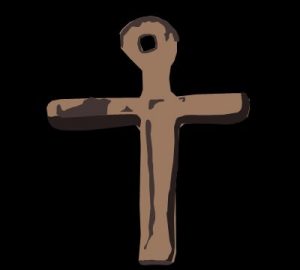
Meanwhile, Craig Tester, Dave Blankenship, and Peter Fornetti drive to the University of New Brunswick in Fredericton, NB. They head to the Department of Earth Sciences building and meet with geochemistry professor Dr. Chris McFarlane, who tells them about the laser ablation test the university will conduct on Drayton’s Cross. He explains that, during the operation, he will use lasers to vaporize a microscopic portion of lead on the cross and funnel the gas into a mass spectrometer- a device which will enable him to determine the precise chemical makeup of the sample. The isotopic ratios present in the vaporized sample may help him to determine the artifact’s place of origin.
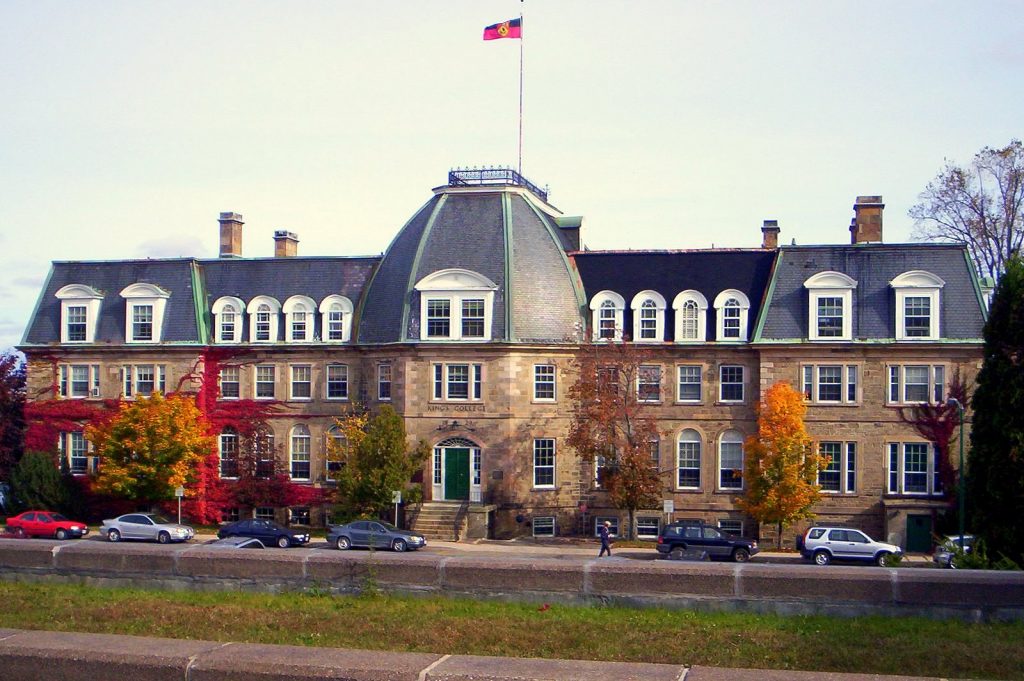
The treasure hunter give McFarlane the lead cross, which he takes to a lab with a mass spectrometer. After remarking that the corrosion on the cross is indicative of the artifact’s having spent several centuries underground, the professor attaches the object, along with six other reference samples of lead, to a plate, which he then inserts into the mass spectrometer. After defining twenty sample locations on the cross, McFarlane starts up the laser and initiates the sample-collecting process as the treasure hunters and lab technician Brandon Boucher look on.
While the laser ablation operation is underway, Jack Begley and Gary Drayton search for more surface artifacts on Oak Island’s Lot 2. After doing some metal detecting near a large granite boulder, Drayton’s metal detector indicates the presence of iron. The treasure hunter removes a layer of moss from the boulder and discovers the rusted head of an iron spike which has been completely embedded in the rock. Near the iron spike is a shallow drilled hole. Drayton suggests that the spike and hole constitute the remains of a ring bolt through which a chain or rope was threaded for the purpose of hauling heavy objects.
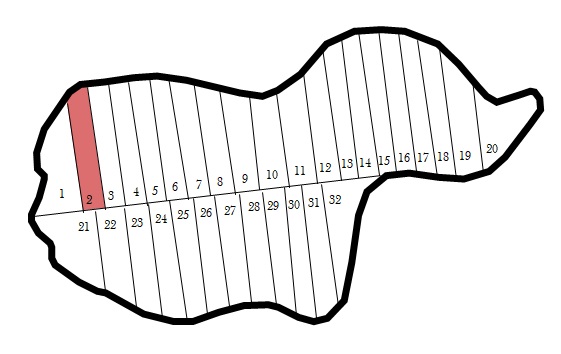
Certain that they have discovered a relic of the original depositors, an excited Begley and Drayton call up Rick Lagina and inform him of the find. Rick soon arrives on the site with Doug Crowell. The treasure hunters all agree that they ought to let archaeologist Laird Niven examine the boulder before they conduct a more thorough investigation of the object, in accordance with Nova Scotian law.
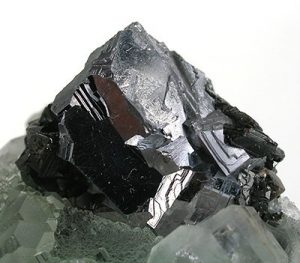
Back in Fredericton, Dr. Chris McFarlane analyzes the results of the laser ablation test that has just been conducted on Drayton’s Cross. He informs the crew that the lead cross contains trace amounts of silver- an indication that the object was crafted using old-fashioned smelting techniques. The narrator then explains that an important source of lead is galena, an ore containing significant concentrations of silver, and that lead objects crafted prior to 19th Century advances in smelting often contained trace amounts of silver.
McFarlane then compares the isotopic ratios in Drayton’s Cross with samples of North American lead, and concludes that the artifact was not crafted anywhere in North America. Craig Tester, Dave Blankenship, and Peter Fornetti thank the professor for his work and head back to Oak Island.
Later, the Oak Island crew meets in the War Room, where Craig Tester, who is in attendance via Skype, relates the findings of the laser ablation test. The treasure hunters express their pleasure in the knowledge that Drayton’s Cross is not a product of North America, and agree that further testing of the artifact is in order.
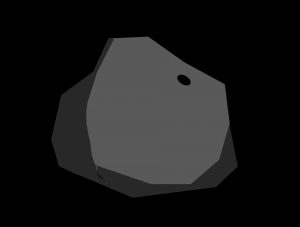 Later, Rick Lagina and Gary Drayton head to the newly-found drilled stone with Laird Niven so that the archaeologist might prescribe an excavation procedure. After photographing the drilled stone, Niven allows the treasure hunters to remove more of the moss that covers it.
Later, Rick Lagina and Gary Drayton head to the newly-found drilled stone with Laird Niven so that the archaeologist might prescribe an excavation procedure. After photographing the drilled stone, Niven allows the treasure hunters to remove more of the moss that covers it.
More of the stone is uncovered, revealing five additional drillholes which form a line. When even more moss is pulled away, Rick Lagina spots a faint triangular mark on the stone, which Niven suggests may have been chiseled, and might even constitute a stonemason’s signature. Rick expresses his desire to determine whether the marking is really a man-made carving, “or even an attempt at a carving”.
Later, Marty Lagina and Peter Fornetti meet with geophysicist Mike West (who conducted a conductivity test in the Money Pit area in Season 5, Episode 6) and technician Andrew Gillis at Smith’s Cove. West and Gillis proceed to carry out a metal-detecting operation with an EM61 Metal Detector- a device which the narrator informs us is able to sense metal objects at a depth of nearly 20 feet, and which can pinpoint the precise location of the target using GPS technology.
Meanwhile, Rick Lagina, Craig Tester, and Dave Blankenship drive to Saint John, New Brunswick, where they meet with David Irving and Victor Murty of Irving Equipment Ltd. In a boardroom in Irving Equipment Ltd.’s headquarters, the contractors discuss the upcoming excavation in Smith’s Cove, and inform the treasure hunters that they have made an “augmented reality” model of Oak Island so that they might give the treasure hunters a more “immersive” understanding of the operations they intend to carry out. Murty proceeds to don a pair of HoloLens goggles, through which he can see the 3D “augmented reality” model of Oak Island. The goggles have a built-in camera which enables the treasure hunters to see Murty’s point of view on a screen. With this visual aid, the contractors show the treasure hunters a model of the cofferdam they plan to construct around Smith’s Cove, and explain how they plan to build it. First, Murty explains, they plan to build a road from the Money Pit area to Smith’s Cove. That accomplished, they will construct a crane pad on the beach which will enable them to place the cofferdam components via crane. After the presentation, Rick remarks upon the considerable scale of the operation, and emphasizes the importance of the upcoming operation at Smith’s Cove.
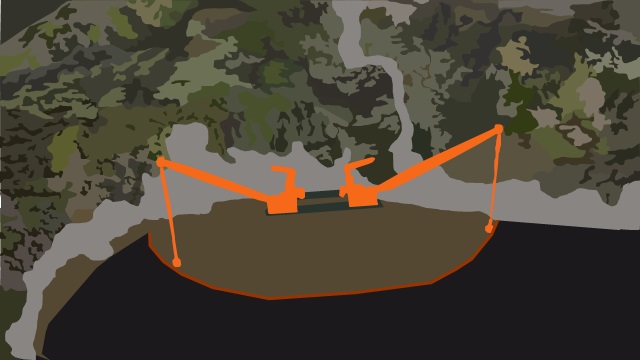
The men conclude their meeting, and Rick Lagina, Craig Tester, and Dave Blankenship head back to Oak Island. During the drive, the three treasure hunters call up Marty Lagina and inform him of Irving’s plan. In a later interview, Marty states, “The excavation at Smith’s Cove is going to be the biggest thing we’ve done here since we’ve embarked on this quest. I have some trepidation about it. It’s going to be a lot of work.”
Back at Smith’s Cove, Mike West gets a hit on the EM61 Metal Detector. West explains to Peter Fornetti that although he cannot determine the depth of the object the EM61 has located, the object appears to be of considerable size.
The next day, Rick Lagina and Gary Drayton go metal detecting on Oak Island’s Lot 21, in the vicinity of the old McGinnis family cabin. The pair quickly unearth an old rusted hinge. Shortly thereafter, Drayton discovers “another bobby dazzler”- specifically a brooch with a red gemstone set in the centre, reminiscent of the rhodolite garnet previously discovered on Lot 8. “The Brooch Brothers are back!” Drayton exclaims before fist-bumping Rick and slipping the brooch into his top pocket.
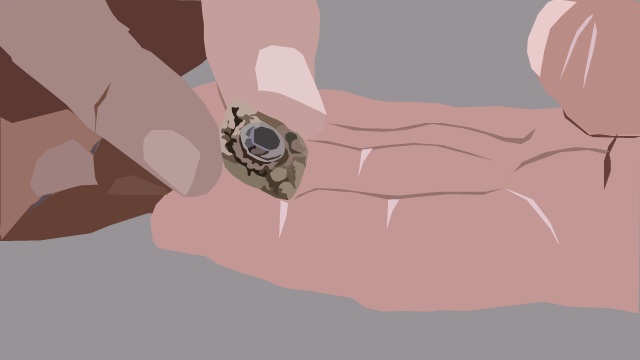
Analysis
Halifax Tunnel
In this episode, geophysical company Eagle Canada conducted a seismic survey of the Money Pit area. Before the Oak Island crew allowed them to proceed with this larger, more expensive operation, they first had them survey a smaller patch of ground overtop of the “Halifax Tunnel” so that they might prove the efficacy of their service.
The “Halifax Tunnel” is a bit of a misnomer, as it could apply to a number of tunnels constructed in 1866 and 1867 by members of the Halifax Company (also known as the Oak Island Eldorado Company), an Oak Island treasure-hunting syndicate. This company was headed by Jotham McCully and James McNutt- veterans of an earlier treasure-hunting company called the Oak Island Association.
Although it was known that the Halifax Company had constructed several shafts and tunnels in the Money Pit area prior to their dissolution in 1867, the location of these structures was not documented and, for many years, was believed to be lost. Fortunately, in 1937, Oak Island treasure hunter Gilbert Hedden rediscovered a tunnel dug by the Halifax Company when sinking the Hedden Shaft just east of the Chappell Shaft; at a depth of 104 feet, his crew discovered a narrow 4’ x 6.5’ tunnel with hemlock cribbing.
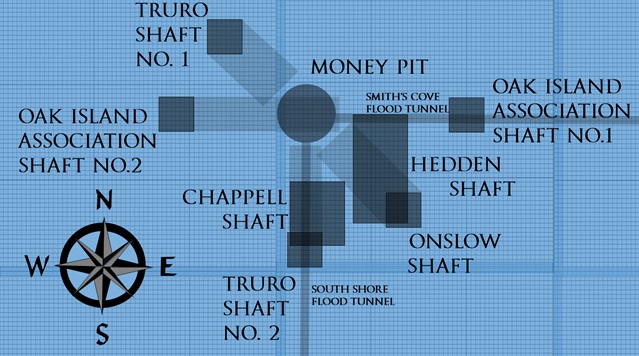
Years later, in 1965, treasure hunter Robert Dunfield discovered what was believed to be another undocumented Halifax Company tunnel near the Cave-in Pit.
In Season 2, Episode 3 of The Curse of Oak Island, the men of Oak Island Tours Inc. attempted to relocate the Halifax Tunnel discovered by Gilbert Hedden in 1937 via exploration drilling. The operation was ultimately unsuccessful. Apparently, the Oak Island crew conducted a similar operation without our knowledge and succeeded in locating another Halifax Tunnel. In this episode, the narrator informed us that this particular “Halifax Tunnel” begins at the bottom of a 110-foot-deep shaft sunk 200 feet south of the Money Pit and runs north for an unspecified length before it intersects a flood tunnel.
The New Cofferdam
In this episode, it was revealed that the men of Oak Island Tours Inc. plan to construct an enormous cofferdam around Smith’s Cove so that they can excavate the area without having to contend with the tide. The narrator informed us this structure will be the largest of its kind ever build on Oak Island.
So far, there have been at least five cofferdams constructed on Oak Island:
- The first was built in the summer of 1850 by members of the Truro Company, who hoped to dismantle and plug the Smith’s Cove box drains. This cofferdam was swept away by a ferocious Atlantic storm shortly after its construction.
- The second cofferdam was built in 1866 by the men of the Halifax Company. Like its ill-fated predecessor, this structure was also washed away by a storm.
- Dan Blankenship built his own cofferdam in 1970, which also failed to withstand the maritime elements.
- In Season 4, Episode 11 of The Curse of Oak Island, Jeremy Frizzell began to construct a small, temporary, 8-foot-high inflatable cofferdam around Smith’s Cove. Before it could be fully assembled, however, the cofferdam inexplicably ruptured, rendering it useless.
- In Season 4, Episode 12, Jack Nichols of Dam-It-Dams built a cofferdam which allowed Oak Island Tours Inc. to uncover what they believed to be remnants of a French drain on Smith’s Cove. Apparently, this cofferdam was demolished by the storms that ravaged Oak Island in the winter of 2017/18.
- Some have speculated that the mysterious U-shaped structure which lies beneath Smith’s Cove constitutes the remains of an ancient cofferdam erected by the original Money Pit builders.
Having learned from the mistakes of the past, Oak Island Tours Inc. has wisely decided to build an enormous cofferdam which will, in theory, be able to withstand any storm the Atlantic can throw at it. Perhaps this structure will help the crew solve the mystery of the box drains, the lead cross, and the French drain once and for all.
The Drilled Rocks
 In this episode, Jack Begley and Gary Drayton, while metal detecting on Oak Island’s Lot 2, discovered a large boulder with six drilled holes and an iron spike driven into it.
In this episode, Jack Begley and Gary Drayton, while metal detecting on Oak Island’s Lot 2, discovered a large boulder with six drilled holes and an iron spike driven into it.
This is not the first drilled rock to be discovered on Oak Island. In the summer of 1938, treasure hunter Gilbert Hedden discovered two similar rocks, one of which was estimated to lie 50 feet north of the Money Pit, and the other about 415 feet due east of the former, on Smith’s Cove (the Smith’s Cove drilled stone was later displaced in the 1960s during Robert Dunfield’s heavy duty operation on Oak Island). These rocks bore manmade holes about two inches deep and one inch in diameter. Prior to this discovery, Hedden had heard rumours about these rocks, which he was told had been found by earlier treasure hunters, but initially took little interest in them. That all changed when his lawyer, R.V. Harris, presented him with a bizarre document known as the Wilkins Map- a document which indicated that the drilled stones were of the utmost importance. Hedden subsequently had his crew search for these stones, which were found without great difficulty. Unfortunately, the fascinating story which follows this discovery is too complicated to detail in this article. For more information on this bizarre chapter of Oak Island history, please check out our analysis of Season 5, Episode 3.
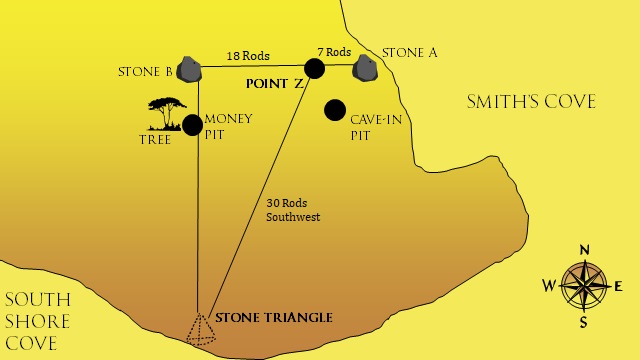
The drilled rocks rediscovered by Gilbert Hedden feature in a number of intriguing Oak Island theories, including the theory involving the Wilkins Map, Laverne Johnson’s theory, and Robert Restall’s theory of the Vertical Shaft. Borehole 10-X also lies on the hypothetical line between these two stones.
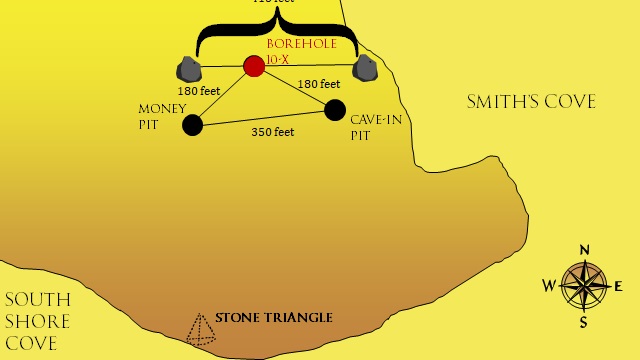
In the 1970s, Dan Blankenship discovered three more drilled rocks similar to Hedden’s, all of which were located north of the Money Pit area. Fred Nolan also discovered several drilled rocks on his Oak Island property, along with a number of rocks with metal ringbolts embedded in them- artifacts evocative of the theory put forth in this episode that the drilled stone on Lot 2 once housed a ringbolt which functioned as a primitive pulley.
Another drilled rock was discovered in Season 3, Episode 1, when British Columbian engineers Mike and Sean Herold came to Oak Island in order to test the late Laverne Johnson’s theory.
Brooch #2
In this episode, “Brooch Brothers” Rick Lagina and Gary Drayton discovered an old bejewelled brooch on Oak Island’s Lot 21, near the foundations of Daniel McGinnis’ house. This artifact is strongly reminiscent of the rhodolite garnet brooch discovered on Lot 8 in Season 5, Episode 16. In the Season 5 finale, Gary Drayton claimed that an unnamed gemologist examined the rhodolite brooch and estimated that it had likely been fashioned in the 16th or 17th Century. Perhaps this second brooch will prove to be of a similar age.

Want to Help?
If you enjoyed this article and would like to help support this website, please check out our online bookshop:
.
.
.







Todd Schwartz
The iron bolt in the rock looks like a wedge and feathers that rusted together. They are used to split rocks for masonry work.
Hammerson Peters
Very interesting! I’d never heard of that before. Thanks for sharing!
Shirley Chaston
I am enjoying all this history of the Free Masons as my Father and Grandfather were members and sorry to say they have both passed away so not able to ask them questions.My Father had a ring with the emblem also had an apron they wore at they’re ‘meetings. After my Dad passed the stone in the ring went missing but still have the ring….we to have a mystery…Thanks